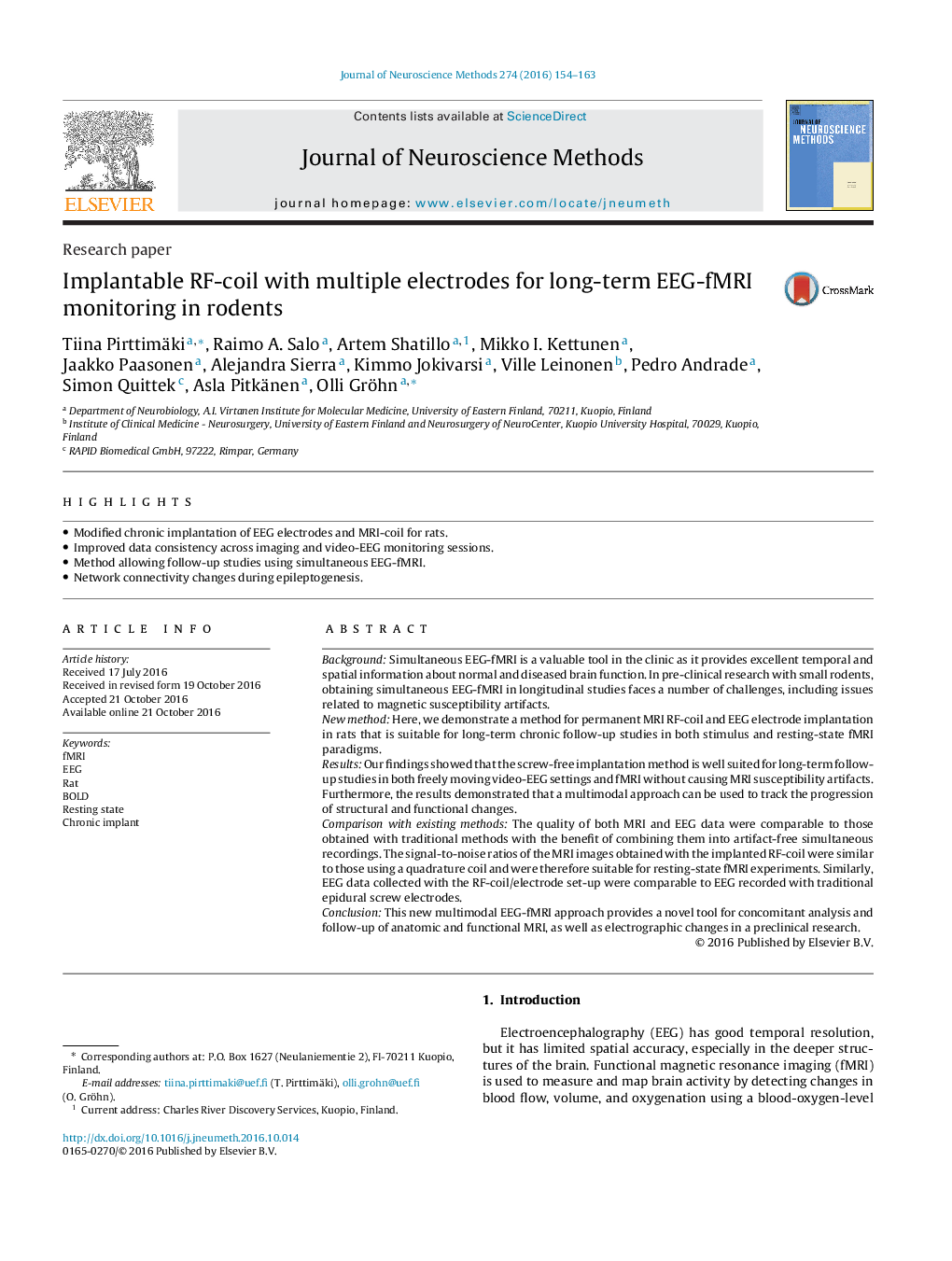| Article ID | Journal | Published Year | Pages | File Type |
|---|---|---|---|---|
| 6267550 | Journal of Neuroscience Methods | 2016 | 10 Pages |
â¢Modified chronic implantation of EEG electrodes and MRI-coil for rats.â¢Improved data consistency across imaging and video-EEG monitoring sessions.â¢Method allowing follow-up studies using simultaneous EEG-fMRI.â¢Network connectivity changes during epileptogenesis.
BackgroundSimultaneous EEG-fMRI is a valuable tool in the clinic as it provides excellent temporal and spatial information about normal and diseased brain function. In pre-clinical research with small rodents, obtaining simultaneous EEG-fMRI in longitudinal studies faces a number of challenges, including issues related to magnetic susceptibility artifacts.New methodHere, we demonstrate a method for permanent MRI RF-coil and EEG electrode implantation in rats that is suitable for long-term chronic follow-up studies in both stimulus and resting-state fMRI paradigms.ResultsOur findings showed that the screw-free implantation method is well suited for long-term follow-up studies in both freely moving video-EEG settings and fMRI without causing MRI susceptibility artifacts. Furthermore, the results demonstrated that a multimodal approach can be used to track the progression of structural and functional changes.Comparison with existing methodsThe quality of both MRI and EEG data were comparable to those obtained with traditional methods with the benefit of combining them into artifact-free simultaneous recordings. The signal-to-noise ratios of the MRI images obtained with the implanted RF-coil were similar to those using a quadrature coil and were therefore suitable for resting-state fMRI experiments. Similarly, EEG data collected with the RF-coil/electrode set-up were comparable to EEG recorded with traditional epidural screw electrodes.ConclusionThis new multimodal EEG-fMRI approach provides a novel tool for concomitant analysis and follow-up of anatomic and functional MRI, as well as electrographic changes in a preclinical research.
